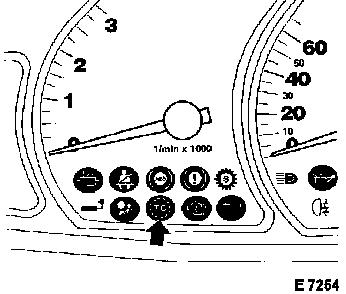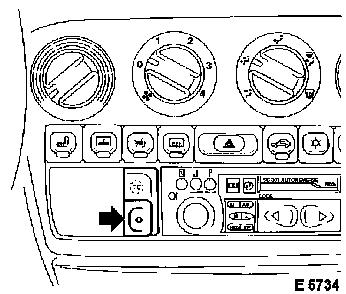|
General Instructions TC
One of the most important input signals to the TC is information
on wheel speed. Worn tyres have a smaller diameter than tyres with
their full tread profile and therefore a higher speed. If there are
different types of tyres on the vehicle, this can lead to the TC
not working properly, since different tyre diameters cause
different information on wheel speed to be sent to the ABS/TC
control unit.
The ABS/TC control unit adapts automatically to tyre sizes to
avoid this effect, i.e. different tyre diameters are recognised and
the information on speed is corrected accordingly.
Since this adaptation is carried out only in certain driving
situations and it also takes some time, the TC can work incorrectly
immediately after tyres have been changed (e.g. when worn rear
tyres are changed for new ones). If tyre pressure is completely
wrong on a single tyre, this can lead to a similar effect.
If problems of this kind occur, the
control unit can be adapted quickly to the tyres by the following
procedure:
- Pump up all tyres to the correct pressure
- Accelerate the vehicle up to a speed of 100-120 km/h / 62-75
mph
- Let the vehicle coast down on a straight line, without touching
accelerator or brake, until the speed falls below 70 km/h / 45
mph.
Repeat this action 5 times; the system is then fully adapted to
the tyre sizes.
The TC prevents uncontrolled spinning of the drive wheels
– especially on slippery road surfaces in the wet, on snow or
on ice.
The TC is only installed in combination with ABS in vehicles
with V6 operations.
Engine performance or engine torque is automatically controlled,
so that optimum manoeuvrability and traction are ensured within the
physical limits. The control uses the Motronic. This is
accomplished by altering the actuation of the injectors.
Additionally the ignition timing can be altered.
Control by the TC is indicated by flashing of the TC warning
lamp in the instrument panel. The reduction in engine performance
during TC control can also be recognised when the engine does not
react to actuation of the accelerator as usual.
After starting the engine, the TC is automatically ready to
operate. While driving, the system constantly monitors itself.
|
If the TC warning lamp (arrow) in the instrument panel does not
extinguish a few seconds after switching on the ignition or if it
illuminates permanently while driving with the TC switched on, this
indicates a fault in the TC. The vehicle can still be used without
restrictions. However, excessive acceleration can lead to wheelspin
of the drive wheels.
|

|
|
When driving with snow chains, in deep snow or when "digging
out" of deep ground, it might be advisable to switch the TC off
with the TC switch (arrow).
The system is reactivated by pressing the TC switch (arrow)
again or automatically when the ignition is next switched on.
|

|
|